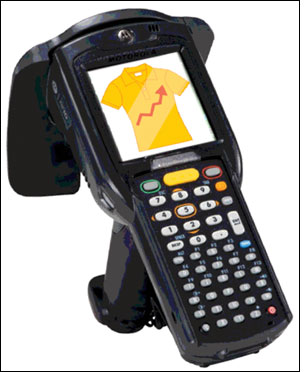Jun 01, 2010Recent economic turmoil has magnified the need for apparel retailers to maintain accurate, lean and targeted inventories. But to increase sales by having the right product on store shelves at the correct price, retailers must also improve operational efficiencies throughout the enterprise. Studies conducted by the University of Arkansas' RFID Research Center show that RFID-tracking products at the item level can enable apparel retailers to gain control of their inventory, strengthen replenishment processes, reduce shrinkage and lower labor costs. American Apparel, JCPenney and other retailers that have tested or deployed RFID solutions have found that they do, indeed, deliver these benefits.
Yet, while we're still in the early days of an economic recovery, apparel retailers are hesitant to invest in new technology. They fear the up-front costs of tags, fixed interrogators, software and data integration. And many large retailers are afraid to alter already fragile store system infrastructures.
One way to address cost concerns, as well as internal infrastructure issues, is with a software-as-a-service (SaaS) model, a pay-as-you-go solution that requires little or no software installation. In fact, it's often called cloud computing, because the RFID provider hosts and operates the software on the Internet; the customer needs only a computer or server with Internet access to run the application.
RFID vendors offer different SaaS models. Xterprise, for example, will soon make a lighter-weight version of its retail application available on a per-month or per-user basis. This will allow retailers to quickly get item-level inventory accuracy at dramatically lower cost. The software is designed to be scalable, secure and flexible.
Typically, providers of SaaS solutions either offer an on-site appliance or partner with RFID hardware vendors, to eliminate the need for expensive in-store equipment. Xterprise, for instance, equips Motorola's new high-performance 3090-Z handheld RFID readers with the Xterprise software. When store employees use the readers to take inventory or receive goods, the devices capture and store the data. The information can then be uploaded to a cloud-based server, where it's processed and analyzed. Store personnel interact with the Internet-based applications using whichever Web browser they prefer.
RFID vendors have also started offering "managed" services, designed to make it easier and less expensive for retailers to take advantage of item-level tracking. For example, a retailer could contract with a managed services provider (MSP) to tag and count apparel items. For a fee, the MSP would provide the labor and equipment, eliminating the need for the retailer to pay its employees overtime to take inventory and allowing them to stay focused on customers.
The SaaS approach doesn't offer the depth of software functionality that more robust, item-level RFID retail solutions provide. But it does eliminate the need for fixed interrogators and servers at every store. And across a multi-store business, those savings can really add up.
Jim Caudill is the senior VP of marketing and strategy for Xterprise, a leading provider of enterprise RFID software solutions. Illustration by John Hull.


